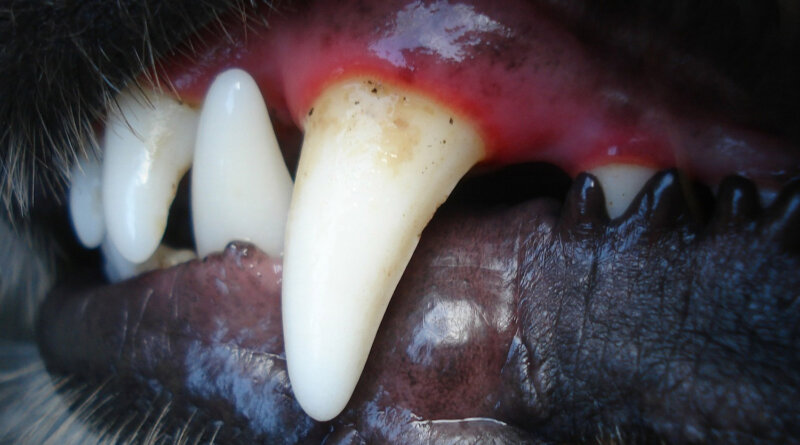Gingivitis in Dogs: What To Know About Canine Gingivitis
In addition to causing a dog’s bad breath, poor oral health can contribute to damage to the a dog’s teeth and gums as well as periodontal disease, which can negatively impact the kidney, liver and heart muscle.
One common type of periodontal disease, gingivitis in dogs, causes inflammation of the gums around the teeth and can act as a wake-up call for owners to pay attention to their dog’s pearly whites before more serious conditions develop.
Symptoms of Gingivitis
- Bright red gums
- Swollen gums
- Excessive plaque and tartar buildup
- Bleeding gums, especially when brushing teeth
- Receding gums
- Loose teeth
- Signs of pain
Until gingivitis reaches a more advanced stage, it can be difficult for dog owners to detect on their own and their animal may not exhibit any symptoms. As such, it’s important that dogs are regularly checked for signs of gingivitis by their veterinarian.
What Causes Gingivitis In Dogs?
Dr. Bert Dodd, a clinical professor at the Texas A&M University College of Veterinary Medicine & Biomedical Sciences, says that gingivitis in dogs is very common, and every dog has it to some degree.
GET THE BARK NEWSLETTER IN YOUR INBOX!
Sign up and get the answers to your questions.
Just like in humans, gingivitis in dogs is caused by plaque buildup on the tooth. This plaque is made of food, saliva and bacteria. Through an interaction between these foreign bacteria and the body’s immune system, enzymes are released that break down the gum tissue, leading to inflammation.
At more advanced stages, this can lead to chronic pain and gum erosion.
“If left untreated, gingivitis leads to perodiontis, or inflammation and destruction of the hard tissues around the tooth,” Dodd said.
In addition to increasing the potential for heart, kidney and liver disease, unchecked gingivitis may result in missing teeth and bone loss, in severe cases.
Is Gingivitis In Dogs Preventable?
Luckily, gingivitis can be easily prevented through routine oral care habits. Dodd recommends brushing your dog’s teeth daily to remove harmful bacteria and prevent a buildup of plaque.
Although some dogs may be resistant to having their teeth brushed at first, over time a regular routine will acclimate them to the practice, according to Dodd.
Special dog toothbrushes and dog toothpastes safe for pets can be purchased from most pet supply stores. When brushing a dog’s teeth, owners should never use human toothpaste, as this is toxic to animals.
Read more: Learn how to brush your dog’s teeth.
Dodd also recommends having your dog’s teeth professionally cleaned every year. Many clinics offer special deals on dental care for National Pet Dental Health month in February, so now is the perfect time to reach out to your veterinarian.
If a dog does develop gingivitis, it can be managed through teeth cleaning and debridement, or the surgical removal of damaged tissue by a veterinarian.
Proper management of your dog’s oral health is important for their well-being. With routine care, owners can prevent the development of serious oral health conditions and ensure the continued well-being of their furry friend.




